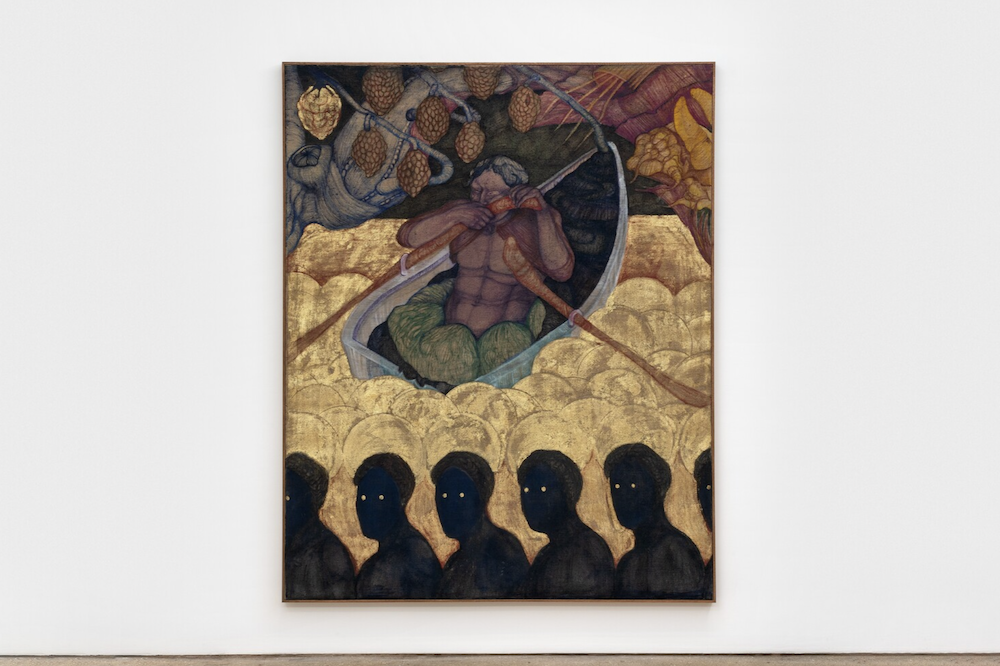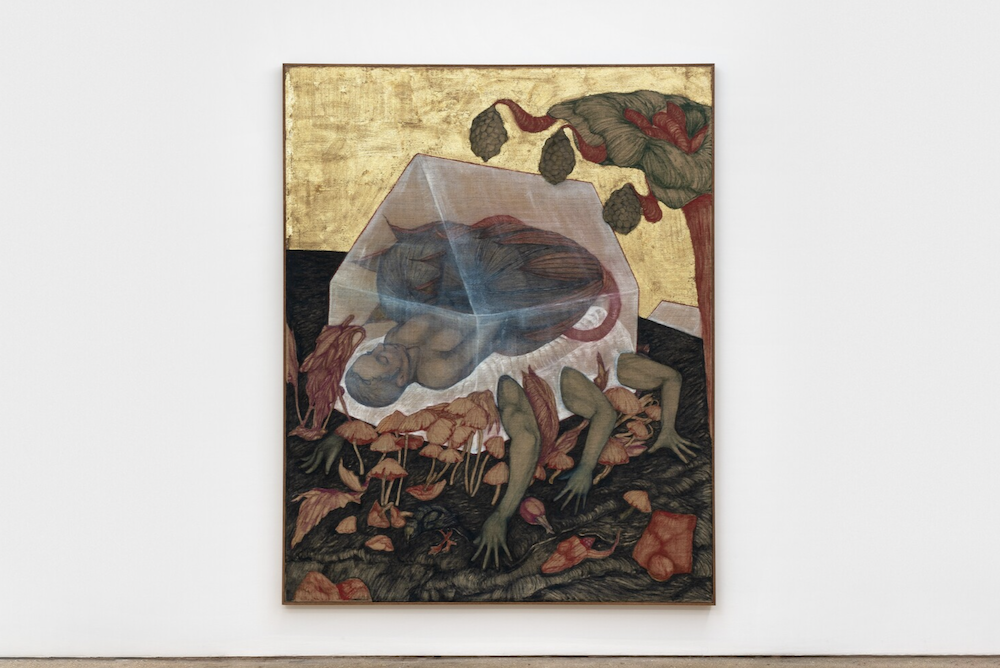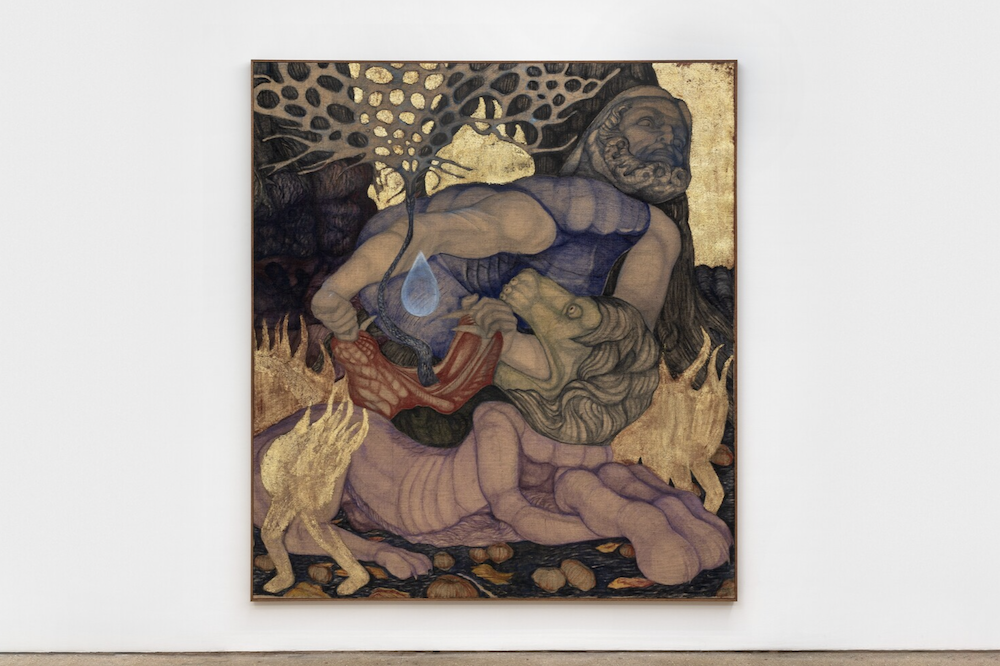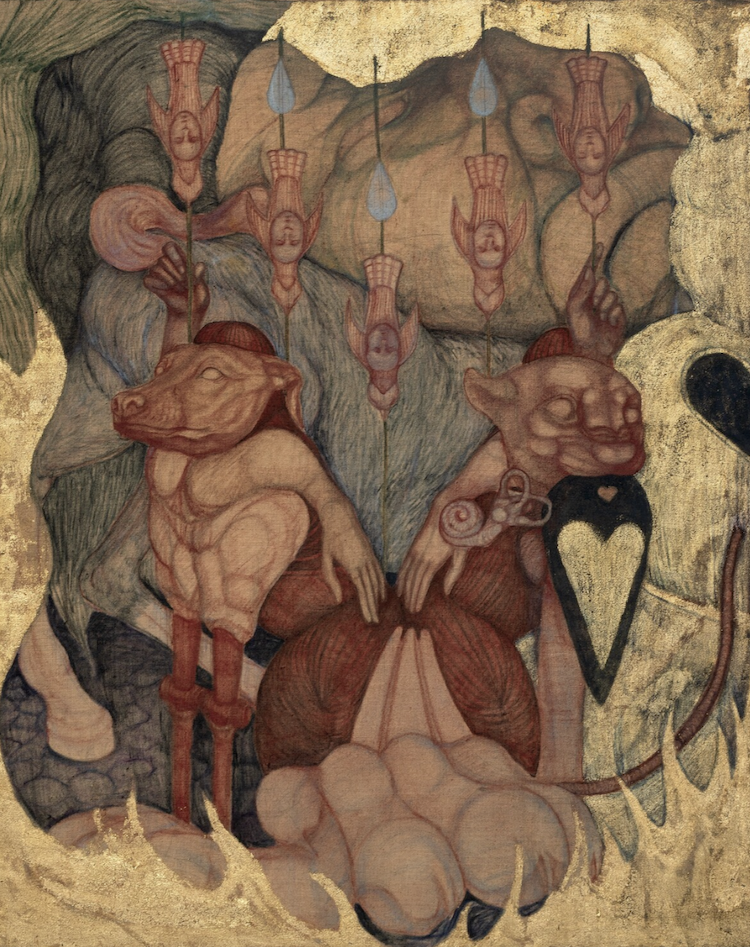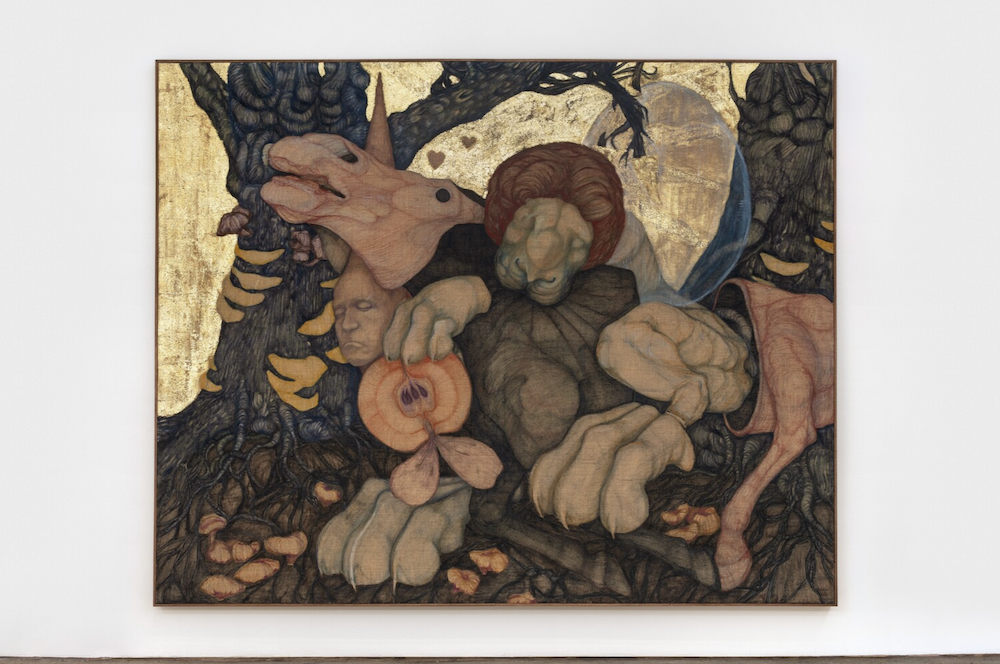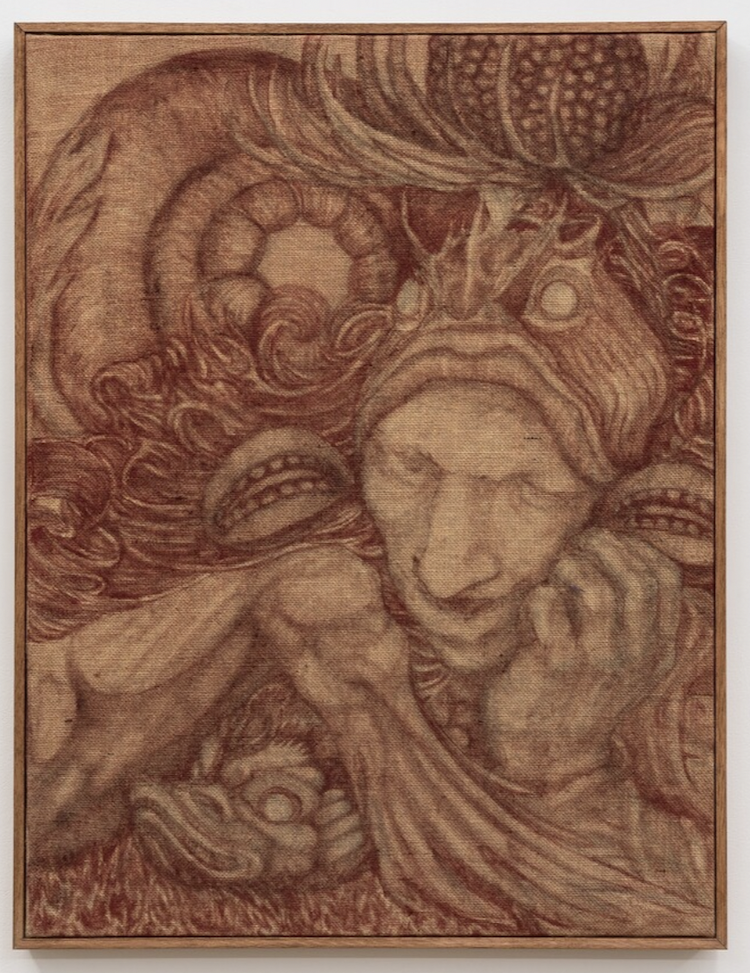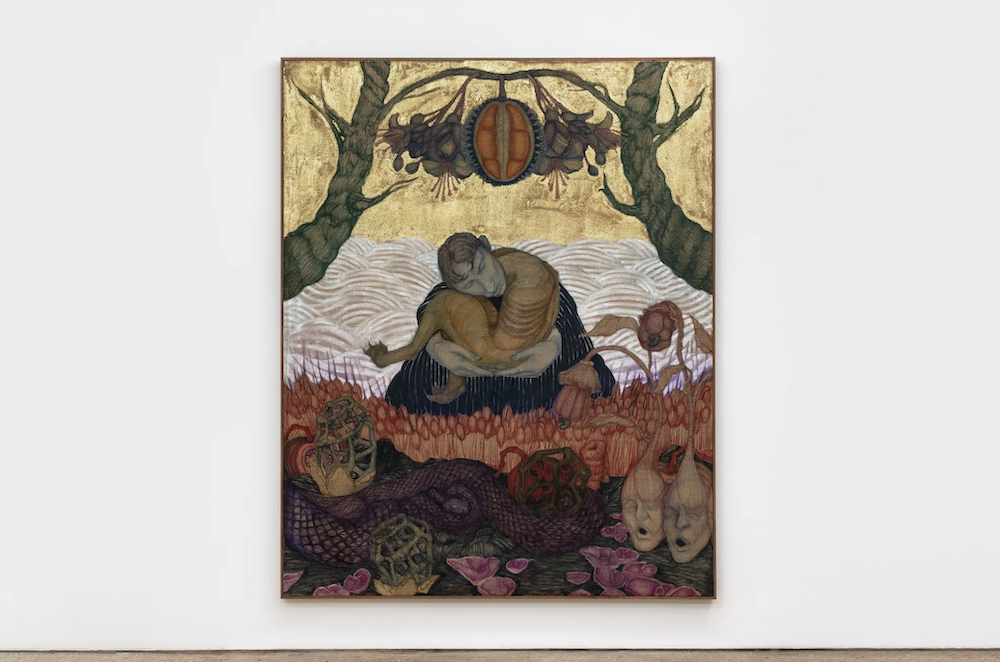Public Gallery is pleased to present Når den hvide rod rejser sig / When the white root rises, a solo exhibition by Copenhagen-based artist Victor Bengtsson. Referencing historical experiments as well as modern-day medicine, Greek mythology, and Scandinavian folklore, Bengtsson presents a new series of theatrical compositions, each rendered in undiluted oil paint and gold leaf on raw jute canvas. This exhibition is the artist’s first with the gallery and in the UK, accompanied by a short essay by art historian and writer Olivia Turner Saul.
Bengtsson’s Bodies in Flux: Alchemy, Magical Ecology and the Grotesque
Despite his medical background, Bengtsson disrupts the conventional human-animal binary, moving away from the typical dichotomy between ‘anthropology and human biology,’ focused on humans, and ‘zoology and botany’ focused on non-human subjects.
Bengtsson depicts bodies as entangled, existing no longer above or outside the nonhuman, emphasized by thin layers of dry brushed earthy oil colors and saturated imagery of flora, fauna, and humans coalescing. Applying small quantities of paint through a process of dry rubbing into jute canvas, Bengtsson creates a translucent and diluted effect as if the canvas has been dyed. Conventional notions concerning medium and materiality are challenged as the paintings oscillate between resembling a tapestry and embodying the characteristics of a theater stage. They fluctuate between states of stillness and movement, vacillating between expressions of modesty and grandeur.
A recurring material across Bengtsson’s paintings is imitation gold leaf, accentuating the opulence of dramatic storytelling while retaining the essence of the simulacrum. Much like how the tangible materiality of the paintings invites scrutiny, embodying notions of deceit and replication, Bengtsson portrays overarching narratives that are exaggerated and stylized, akin to opera performances. The artist depicts the human corporeal experience as a continuously transforming and grotesque representation, prompting viewers to contemplate the symbiotic relationship between the human and the nonhuman. The grotesque, noted by theoretical cosmologist Daniel Baumann, effectuates a process of metamorphosis, establishing an unconventional and hybrid space where all entities have the capacity to assume alternative forms.
One painting depicts a glass house with six human arms, sheltering a young child. The humanoid-insect entity carries the body in a solitary procession, simultaneously being consumed and emerging into existence by a carnivorous blossom. This oscillation between states of being and becoming corresponds to the ideas of Renaissance writer Rabelais, a concept philosopher Mikhail Bakhtin explores in his essay ‘Rabelais and His World’ (1968). Bakhtin writes: “The grotesque body … is a body in the act of becoming.” This corporeal entity is a perpetual process, never reaching finality but continuously constructed, engendered, and giving rise to another form. Bengtsson’s painting is inspired by the medical journal of David Vetter, a young child known as the ‘boy in the bubble’, who had severe combined immune deficiency (SCID). Throughout his brief twelve-year life, Vetter lived in protective bubble-like enclosures, isolated from physical contact to shield him from disease, and affection only made possible through six tube-like arms. Tales akin to medical histories, such as Vetter’s, often manifest as allegorical narratives in Bengtsson’s paintings, in which his interpretations take on the nature of fantasy and folklore.
Lacking distinct boundaries from the external world, Bengtsson depicts humans, creatures, and hybrid bodies in a state of continuous becoming, merging and emerging from their surroundings. In this new series of paintings, magical ecology serves as a common thread. Here, magic is conceptualized as an inherent mode of attentiveness that facilitates the reclamation of animism, enabling us to recognize the interconnectedness of all material bodies. Bluish, disembodied heads intertwine with translucent flower stems, melding soft pastel flowers seamlessly into their corporeal essence. In alignment with political theorist Jane Bennett’s concept of vital materiality, Bengtsson portrays the vibrancy and agency of matter, presenting scenarios where fungi, flowers, and tree trunks share equal significance with snakes, unicorns, and humans. Within these assemblages, boundaries are porous, allowing for a coexistence and synergy of disparate elements. The magical ecological narrative facilitates the discernment of less apparent connections between material practices, spanning spirituality and ethics, the complex nature of the human experience, and the vibrant materialism of the Grotesque. – Olivia Turner Saul



